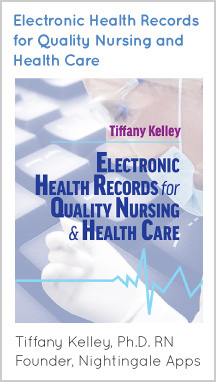Last week I had two once-a-year visits back to back. One was with my Primary Care Provider (PCP) and the second was with a new dermatologist. Both visits were booked out 9 months or longer in advance which initially surprised me.
As someone who is a healthcare professional of over 20 years and actively working in the space of innovation, I cannot help but notice some of the challenges of being a patient. My reflections are not intended to critique any particular provider, practice, clinic, facility or other healthcare organization. Instead, I see the challenges reflective of unmet needs faced by patients that could largely go unnoticed by healthcare professionals.
Patient-centered care is one of the 6 quality outcome metrics. However, I often wonder how we are defining patient-centered care. Is it defined by the perspective of healthcare professionals as to what we think patient-centered care means OR are patients involved in the process of defining what patient-centered means to them?
I had a couple of snafus trying to get to both appointments. The address for both offices was incorrect from the reality. Luckily, I was able speak to someone in the buildings, completely unrelated to my provider’s practice, who shared with me the correct locations. In both instances, I heard, “You are not the only one.”
Imagine if I was running late or my mobility was compromised so additional walking would be potentially burdensome to make it to the correct location. I would miss that appointment due to an administrative error. That appointment scheduled 9 months in advance and requiring my day to be arranged around it. The healthcare practice may see it as a no-show when that was not at all the intention.
The second administrative burden that I ran into was obtaining a detailed receipt for the charge paid upon leaving the dermatology visit. I used my Health Savings Account (HSA) card for the payment and the next day received an email requesting a detailed receipt for the payment. The receipt I received from the office only provided the location, date and amount. The reason for the payment was not included in the receipt.
When I called a few days later, I was surprised to hear how difficult it would be to obtain the detailed information. I asked if it is possible to receive a receipt with information as to details on the charge for the payment. The response was, “I don’t know.” She worked to investigate on her end and then said that someone would call me back. I did receive a call back and need to call another department to get the requested information. My question to her was why is it not on the receipt that I received the day I paid? The answer I received was HIPAA in the event I lost the receipt.
The phone calls, time, and effort to get the detailed receipt is an expense of its own as a patient that extends far beyond the 20 minute appointment. I often wonder how many patients go through the efforts to address the details requested for proof of purchase and/or reimbursement of rendered services.
Being a patient, even for a visit once a year, presents challenges that I am not sure are often recognized or considered as healthcare professionals. Without integrating patients into the process, these burdens will continue and lead to the same challenges over and over again.
Users are at the greatest advantage of identifying opportunities for change. In healthcare, change tends to require an ability to demonstrate quality outcomes. In this category, I envision patient-centeredness as the primary focal area. To fully reach the utopia of patient-centeredness, we need to understand the areas where being a patient presents challenges beyond the healthcare visit itself. To a patient, the entire process is seen as one experience.
Have a lovely evening,
Dr. Tiffany Kelley PhD MBA RN-BC

 Know My Voice®
Know My Voice®




